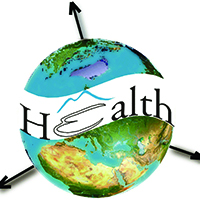Spatiotemporal epidemiology of COVID-19 from an epidemic course perspective

Submitted: 11 June 2021
Accepted: 16 August 2021
Published: 10 February 2022
Accepted: 16 August 2021
Abstract Views: 2638
PDF: 301
HTML: 21
HTML: 21
Publisher's note
All claims expressed in this article are solely those of the authors and do not necessarily represent those of their affiliated organizations, or those of the publisher, the editors and the reviewers. Any product that may be evaluated in this article or claim that may be made by its manufacturer is not guaranteed or endorsed by the publisher.
All claims expressed in this article are solely those of the authors and do not necessarily represent those of their affiliated organizations, or those of the publisher, the editors and the reviewers. Any product that may be evaluated in this article or claim that may be made by its manufacturer is not guaranteed or endorsed by the publisher.
Similar Articles
- Yaqi Wang, Zhiwei Wan, Spatial autocorrelation and stratified heterogeneity in the evaluation of breast cancer risk inequity and socioeconomic factors analysis in China: Evidence from Nanchang, Jiangxi Province , Geospatial Health: Vol. 17 No. 1 (2022)
- Gilbert Nduwayezu, Pengxiang Zhao, Clarisse Kagoyire, Lina Eklund, Jean Pierre Bizimana, Petter Pilesjo, Ali Mansourian, Understanding the spatial non-stationarity in the relationships between malaria incidence and environmental risk factors using Geographically Weighted Random Forest: A case study in Rwanda , Geospatial Health: Vol. 18 No. 1 (2023)
You may also start an advanced similarity search for this article.

 https://doi.org/10.4081/gh.2022.1023
https://doi.org/10.4081/gh.2022.1023





